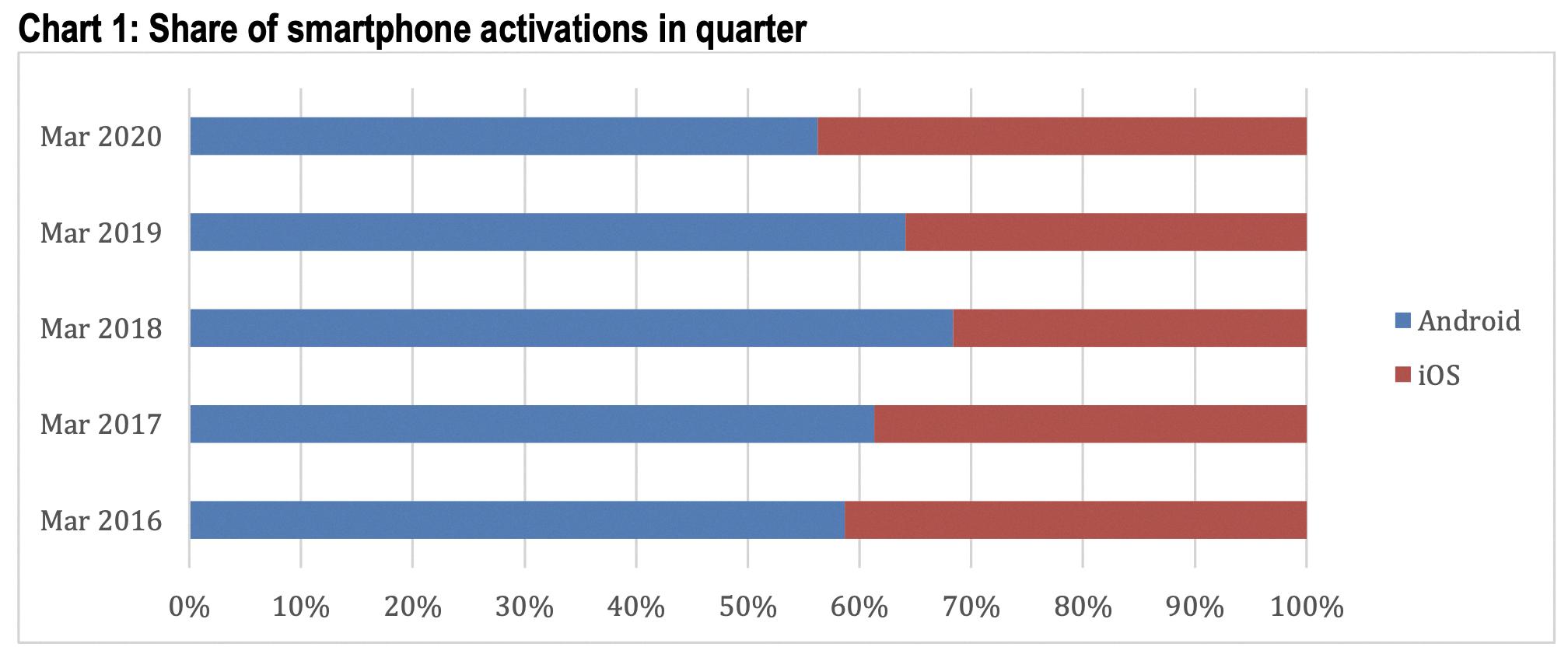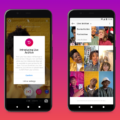Smartphone Users and the Percentage of iPhone Users vs. Android in 2020
In the ever-evolving world of technology, smartphones have become an integral part of our daily lives. With an abundance of options available, two major players, Android and iOS (commonly known as iPhone), dominate the market. Understanding the market share of these operating systems is crucial for businesses and developers alike.
Globally, Android takes an unquestionable lead, holding an impressive 70.89% of the market, making it the most popular mobile operating system on the planet. Its open-source nature, wide range of affordable devices, and customization options have contributed to its widespread adoption. Android’s versatility appeals to a vast demographic, from budget-conscious individuals to tech enthusiasts.
In stark contrast, iOS claims a 28.36% share, hanging back by a notable 42.53%. Apple’s iOS, exclusively available on iPhones, has built a loyal and affluent customer base. The brand’s reputation for high-quality hardware, seamless integration with other Apple products, and a user-friendly interface has endeared it to many users worldwide.
While Android dominates the global market, the competition between Android and iOS is more evenly matched in some regions. In the United States, for example, Android claimed 52% of the local smartphone market in the first quarter of 2020. However, Apple’s iPhone, with its dedicated fan base, took a respectable second place with a 27% share.
The battle between Android and iOS is not just about market share; it also extends to app development and user preferences. Android’s open-source platform allows for greater flexibility and innovation in app development, attracting a vast community of developers. On the other hand, iOS provides a more controlled environment, ensuring high-quality apps that meet strict guidelines.
User preferences also play a significant role in the Android vs. iPhone debate. Some users appreciate Android’s customization options, allowing them to personalize their devices according to their preferences. On the contrary, iPhone users often appreciate the simplicity and seamless integration offered by iOS, making it a preferred choice for many.
As the smartphone market continues to evolve, Android and iOS will undoubtedly compete for dominance. Both platforms have their strengths and cater to different user segments. Android’s affordability and customization options continue to attract a wide range of users, while iOS’s reputation for quality and seamless integration appeals to a loyal fan base.
The battle between Android and iOS for smartphone market share is an ongoing saga, with Android leading globally and iOS holding its ground with a dedicated user base. Understanding the preferences and market dynamics of these platforms is vital for businesses and developers seeking to engage with smartphone users in 2020 and beyond.
What Percentage Of People Use IPhone Vs Android?
Globally, Android dominates the mobile operating system market with a commanding 70.89% share. On the other hand, iOS, the operating system used by iPhones, holds a smaller market share of 28.36%. This means that Android has a significant lead over iOS, with a difference of 42.53% in market share.
To put this into perspective, here are some key points:
1. Android’s market share: Android is the most popular mobile operating system worldwide, with a market share of 70.89%. This means that the majority of smartphone users around the globe use Android devices.
2. iOS market share: iOS, the operating system used by iPhones, holds a market share of 28.36%. While this is still a substantial share, it falls significantly behind Android.
3. Difference in market share: The difference in market share between Android and iOS is a substantial 42.53%. This highlights the significant lead that Android has over iOS in terms of popularity and user base.
4. Regional variations: It’s important to note that these market share figures represent a global perspective. Market shares may vary across different regions and countries. For instance, iOS tends to have a higher market share in certain developed countries, while Android dominates in emerging markets.
Android enjoys a clear advantage over iOS in terms of market share, with a significant lead of 42.53%. This makes Android the most popular mobile operating system globally, while iOS holds a smaller but still substantial share of the market.

Is Samsung Or IPhone More Popular?
In the United States, Apple’s iPhone has emerged as the more popular smartphone brand compared to Samsung. According to data from the first quarter of 2023, Apple’s market share stood at an impressive 52%, while Samsung secured the second position with a 27% share. This clearly indicates that Apple has a significantly larger user base and is reigning supreme in terms of popularity in the US.
Here are some key points to support this conclusion:
1. Market Share: Apple’s iPhone holds a commanding lead with a 52% market share, compared to Samsung’s 27%. This demonstrates Apple’s dominance in the US smartphone market.
2. User Preferences: The preference for iPhones over Samsung smartphones can be attributed to a variety of factors, including brand loyalty, user experience, and the perceived prestige associated with owning an iPhone.
3. Brand Recognition: Apple has built a strong brand image and reputation over the years, which has contributed to its popularity. The iPhone is often seen as a status symbol and is favored by many consumers.
4. Ecosystem Integration: Apple’s ecosystem, which includes devices like iPads, MacBooks, and Apple Watches, enhances the overall user experience. This integration and compatibility between Apple devices can be a significant factor in driving iPhone popularity.
5. Marketing and Advertising: Apple’s marketing campaigns and product launches generate significant buzz and excitement, which contributes to the popularity of their iPhones. Their sleek and innovative designs, along with effective advertising, help capture the attention of consumers.
It is important to note that these statistics reflect the US market specifically. Popularity may vary in other regions or countries, and the market dynamics can change over time. However, based on the current data, Apple’s iPhone clearly holds the edge over Samsung in terms of popularity in the US smartphone market.
Conclusion
Smartphone usage has become increasingly prevalent worldwide, with Android and iOS being the dominant operating systems. Android holds a significant market share of 70.89%, making it the most popular choice among consumers. However, iOS still maintains a respectable 28.36% share, providing a strong competition to Android.
The battle between Android and iOS is particularly fierce in the United States, where Android claims 52% of the smartphone market. Samsung, a prominent Android device manufacturer, takes second place with 27% market share. This indicates the strong preference for Android devices among American consumers.
The global smartphone market is highly competitive, with Android and iOS vying for dominance. While Android enjoys a substantial lead in terms of market share, iOS continues to capture a significant portion of the market. This competition ultimately benefits consumers, as it drives innovation and provides a range of choices in terms of operating systems and smartphone brands.








